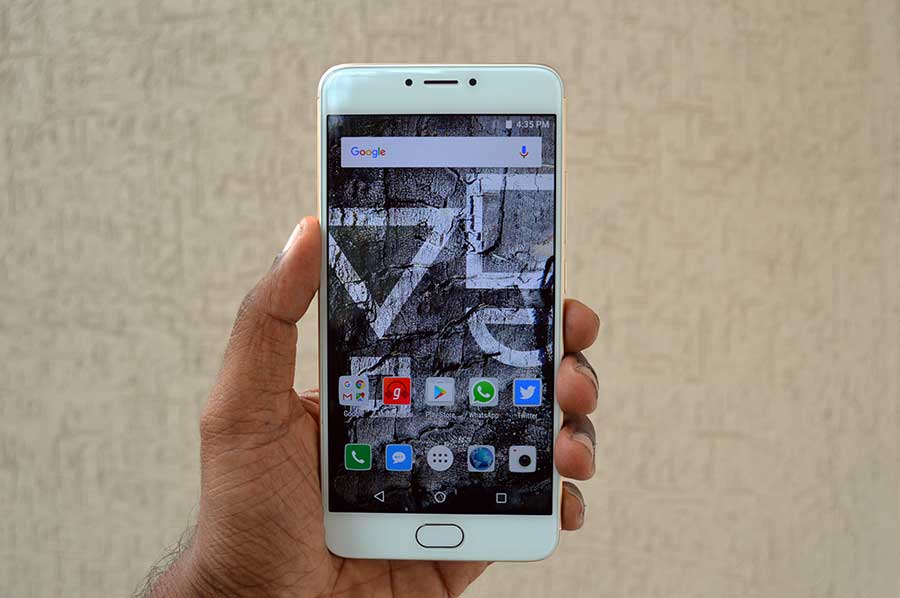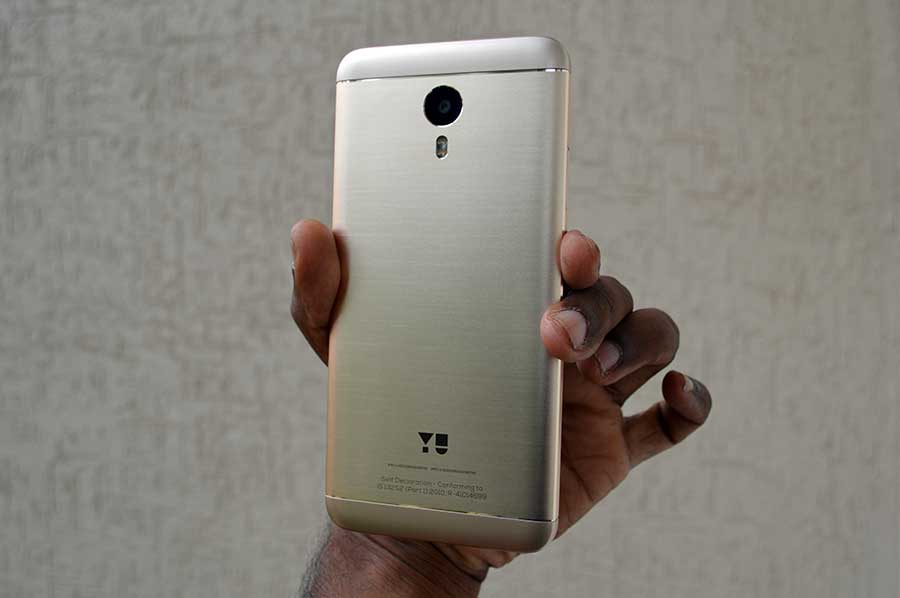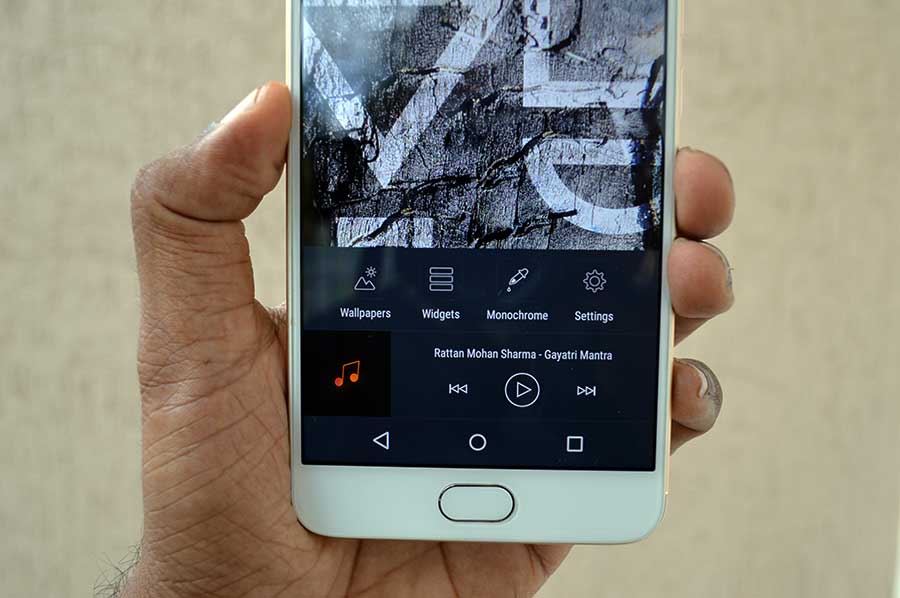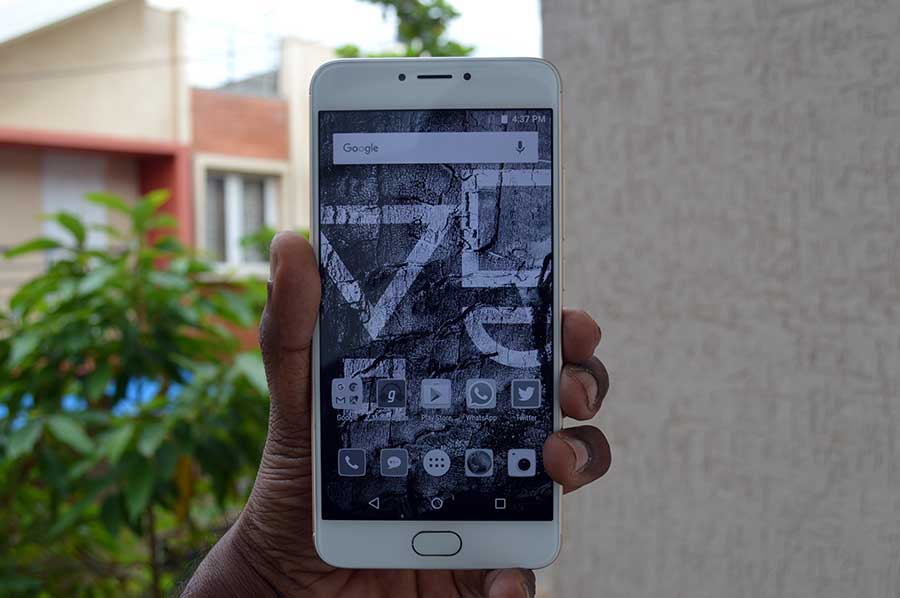It was an eureka moment, when Yu Televentures, the subsidiary of Micromax India announced the Yurerka back in 2015. They wooed Cyanogen into an exclusive partnership in India, gathered serious interests amongst the tech communities as well as general interest for the device. It was also a clever strategy by Micromax to gain respect as a technology company and shed the image of just being a price-driven budget device maker. Of course, the initial Yu devices were still affordable and offered more value for money. The momentum soon shifted course, the marriage with Cyanogen got into rough weather, they started offering stock Android and then they launched Yutopia which was far from being utopia. Lessons learned and after lying low, Yunicorn is here. The company says they are ‘redefining flagship’ devices with this one but does it? I am finding it out in this Yu Yunicorn review.
https://youtu.be/hst4tWHKsOo
Design and Build
- Metal unibody
- Aluminum, Magnesium & Manganese materials
- Brushed finish
- 8.15mm thickness
- 172 grams
- hybrid dual-nano SIM
Most popular phones in this category have strong resemblance to each other, I don’t blame them though. I began my career as a fashion designer and I understand invariably there is a fad and any particular season, there will be a common trait. While there would be semblance, a detailed look offers how they vary from each other.
With Yunicorn what is immediately noticeable when you take the phone in hand is its build quality assurance. It gives a feeling of strong body and it is reassuring. Though it is slightly on a heavier side compared to some of its peer at 172 grams. At 8.15mm, it’s not svelte either but not very bulky too.
The front design doesn’t excite, especially the white face around the display. A golden shade would have complimented well with the rear. The bezels are a bit prominent too. There is a home button at the bottom chin which combines as the finger print sensor. Then there is the set of on-screen buttons too. The top has the unsuspecting earpiece flanked by sensors and selfie camera.

The back sports a different personality and is charming. The brushed finish wins the attention, so does the overall looks. There are radio cutouts on the top and bottom and the 13-megapixel camera is positioned at the top center with the dual LED flash below it. Yu branding is straight below. Yu says the choice of alloy that has gone into making the chassis gets better unlike some other metal devices that are prone to scratches. Well, I been using the device for couple of weeks now and the body shows no abrasions so far.

Yunicorn uses a hybrid dual-SIM, so one of the SIM can be replaced by a microSD card. The bottom houses the microUSB port (it’s not type-C type) and speaker grille. The right has the volume and power button at the right reach and offering good tactile feedback. The top houses the audio jack and a microphone.
[gallery link="file" columns="4" ids="11256,11255,11254,11249"]
Display
- 5.5-inch IPS LCD display
- 1920 x 1080 resolution
- 401 ppi
- 2.5D glass
- 1000:1 contrast ratio
Yunicorn faithfully sticks to fullHD and not get adventurous overstepping it in the name of redefining flagship and it’s a wise decision. The display has nothing to complaint about, it’s pretty good. It also helps a bit to the device’s remarkable battery life which we shall discuss in a while. Viewing angles an day light legibility are acceptable.
Swiping up from the bottom throws open a settings shade. It gives quick access to music controls, wallpapers, widgets and a monochrome setting.

Tapping the monochrome setting, strips off the colors. The black and white grew up on me quickly. The display settings has the miravision engine for color tuning. Though, the blue filter toggle now we find in most phones is missing. There is no auto-brightness slider but dig into the display settings, you will find an adaptive display toggle. While it works well, it takes few seconds to adapt to the new environment.

Software
- Android Lollipop 5.1.1
- AoS (Android on Steroids)
- Around Yu services
Lollipop in 2016 is definitely not a redefining implementation. Then, Yu Televentures have their challenges post Cyanogen breakup, while interacting with Rahul Sharma, founder of Yu, he mentioned they are working on a bloatware-free, smooth Android experience better than the stock Android, they call it Android on Steroids. Well, going by my time spend with Yunicorn, the intend is there and they are working towards that but as of now, the software needs more attention in many areas. The UI has patches of areas that needs to be in tune with latest Android experience. Having said that, the AoS is bloatware free and nimble.
https://youtu.be/cHJVow77G0M
Micromax has been investing in many startups in last year or two and they have a game plan in mind. The company wants to push itself away from the specs war, which invariably everyone are catching up with and concentrate on their service platform to be the differentiator of their devices. Around Yu is where they bet their future and they are integrating it not only in their Yu devices but also across Micromax phones. Who knows, if the plan goes well, they might be making money out of their services and can be more competitive with their products. They invested in Gaana music app and made sure it is the default music player in the Yunicorn (also in other Yu devices), also it comes with a six month premium subscription for free when you activate the device. Another notable integration is Lybrate, a healthcare startup that Micormax invested last year. The app is a one stop for personal health care and offers consultation, appointment with doctors, book lab tests and free diet plans. Service focused approach is future forward and good to see Yu taking that course and if they get proactive with their software updates, we can expect a clean, lean yet purposeful UI from Yu.
Internals
- MediaTek Helio P10
- MTK MT6755
- 1.8 Ghz Octa Core
- Mali-T860
- 4GB RAM
- 32 GB ROM + MicroSD upto 128 GB
- 4000mAh Li-Polymer
Internals are not going to win any spec war if pitted against the competing models but Yu clearly does not want to be part of it with Yunicorn. When they mean ‘redefining flagship’ , I assume they want to break-free from the spec mindset. The idea is to offer the chipset that works well and delivers for this particular device and they have placed the bet on Helio P10 and mashed it up with a 4GB of RAM for the extra push. How does it transform into day to day performance? Unless you have this set mind for the ultimate spec for the price you spend, an average consumer would not be disappointed. Yunicorn performs well in many counts. To start with, it handles well the everyday tasks most of us will put it through. It does not hang, it’s agile. There are slight frame drops if you play resource demanding games like NOVA 3 but still they are playable.
https://youtu.be/jW77gOCYfc4
What is positive though is it does not heat up much. Also, the battery holds up well. In fact the single most bright spot of the Yunicorn is its battery life, having a large 4000mAh battery helps and it delivers amazing backup. On a normal mixed use, it can easily sail through two days, and offers close to 8-9 hours of screen on time (SOT). What is a bit of shame though is it does not offer any sort of quick charging and takes close to 4 hours for full re-charge cycle.
Call quality is good and the speaker is acceptable too. The finger print scanner works most time and is on par if not better than the competition. The physical home button works as the finger print sensor and there is also a on-screen navigation buttons. Long pressing the home button when the screen is on also opens up the recent apps tray. For Google Now, you need to press the on-screen home button. I feel if a manufacturer opts for a physical home button for finger print sensor, the other navigation button also should be on the chin flanking it.
Camera
- 13-megapixel rear camera
- OmniVision OV5693 sensor
- EIS (Electronic Image Stabilization)
- 5P lens, F2.2
- Wide angle 79.5 degree
- True Tone Dual LED Flash
- 5-megapixel front camera
- 4P lens, f/2.2 aperture
The specs are listed above but how does it clicks in real terms? When I started using the camera, there was a slight 2 seconds lag in the processing which was bit annoying but Yu rolled out an update which sorted it out. Coming to the camera performance, let me walk through some of the samples, pictures speaks 1000 words, right?
As expected, the rear camera performed decently well on well lit areas, especially outdoors. Though it lacked a bit of depth and overall vibrancy.
[gallery link="file" columns="5" ids="11301,11302,11298,11292,11299"]
Things gets bit noisier when at indoors and especially if the lights goes on a low ebb. On a positive note, the Yunicorn’s sensors manages to reproduce the color to a certain extend even at a moderately low artificial light, though there are quiet a noise level when you strain your eyes at the pictures.
[gallery link="file" columns="5" ids="11300,11293,11295,11296,11297"]
The HDR was kind of nice, though not exceptionally well.

The front camera is OK.
Battery performance
When you have a 4000mAh battery, you does expect a above average battery life and Yunicorn does not disappoint and does extremely well. A screen on time (SoT) averaging between 8.5 hours to 9.15 hours is seriously fab but it is a shame though that there is no quick charging feature. It takes frustratingly close to four hours for a full recharge. Once charged though, you will be happy with the battery life.
Final words
I would not say Yunicorn is redefining flagships it’s not. But what it does indicate is Yu televenutres as a company is redefining itself and is reflected in this device. The idea is to shift the focus from hardware to better user experience and services to access from the phone itself bypassing the need to install multitudes of apps. Around Yu is shaping into a neat platform and the various startups Micromax invested in are increasingly getting accommodated into their ecosystem. It’s a healthy sign. As far as Yunicorn is concern, it’s a decent, solid device with many good traits and few let downs, many of the negatives can be sorted out with software updates and Yu seems to be aware of it and is pushing it in that makes Yunicorn a decent buy, if not a great pick.
]]>

 The back sports a different personality and is charming. The brushed finish wins the attention, so does the overall looks. There are radio cutouts on the top and bottom and the 13-megapixel camera is positioned at the top center with the dual LED flash below it. Yu branding is straight below. Yu says the choice of alloy that has gone into making the chassis gets better unlike some other metal devices that are prone to scratches. Well, I been using the device for couple of weeks now and the body shows no abrasions so far.
The back sports a different personality and is charming. The brushed finish wins the attention, so does the overall looks. There are radio cutouts on the top and bottom and the 13-megapixel camera is positioned at the top center with the dual LED flash below it. Yu branding is straight below. Yu says the choice of alloy that has gone into making the chassis gets better unlike some other metal devices that are prone to scratches. Well, I been using the device for couple of weeks now and the body shows no abrasions so far.
 Yunicorn uses a hybrid dual-SIM, so one of the SIM can be replaced by a microSD card. The bottom houses the microUSB port (it’s not type-C type) and speaker grille. The right has the volume and power button at the right reach and offering good tactile feedback. The top houses the audio jack and a microphone.
[gallery link="file" columns="4" ids="11256,11255,11254,11249"]
Yunicorn uses a hybrid dual-SIM, so one of the SIM can be replaced by a microSD card. The bottom houses the microUSB port (it’s not type-C type) and speaker grille. The right has the volume and power button at the right reach and offering good tactile feedback. The top houses the audio jack and a microphone.
[gallery link="file" columns="4" ids="11256,11255,11254,11249"]
 Tapping the monochrome setting, strips off the colors. The black and white grew up on me quickly. The display settings has the miravision engine for color tuning. Though, the blue filter toggle now we find in most phones is missing. There is no auto-brightness slider but dig into the display settings, you will find an adaptive display toggle. While it works well, it takes few seconds to adapt to the new environment.
Tapping the monochrome setting, strips off the colors. The black and white grew up on me quickly. The display settings has the miravision engine for color tuning. Though, the blue filter toggle now we find in most phones is missing. There is no auto-brightness slider but dig into the display settings, you will find an adaptive display toggle. While it works well, it takes few seconds to adapt to the new environment.

 The front camera is OK.
The front camera is OK.

